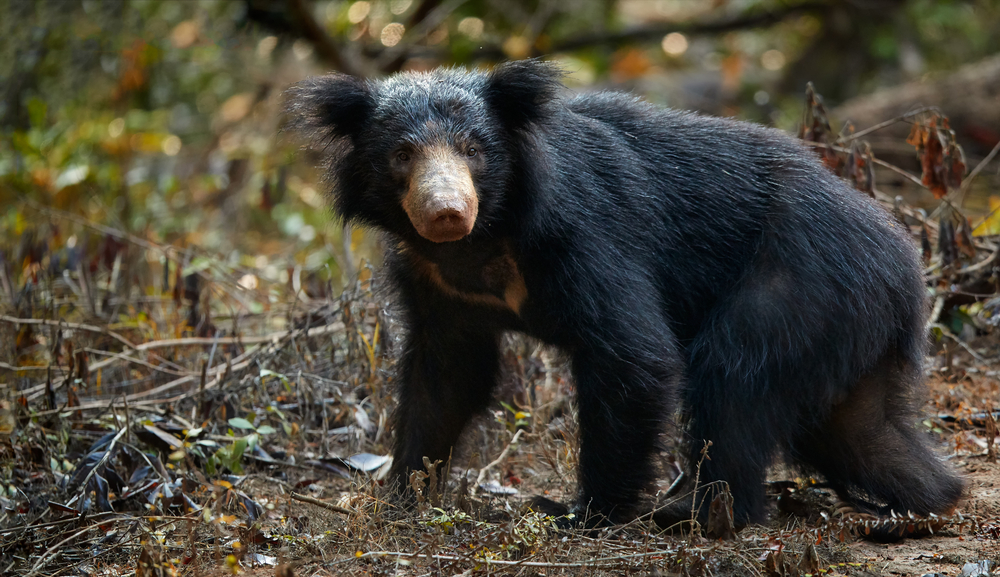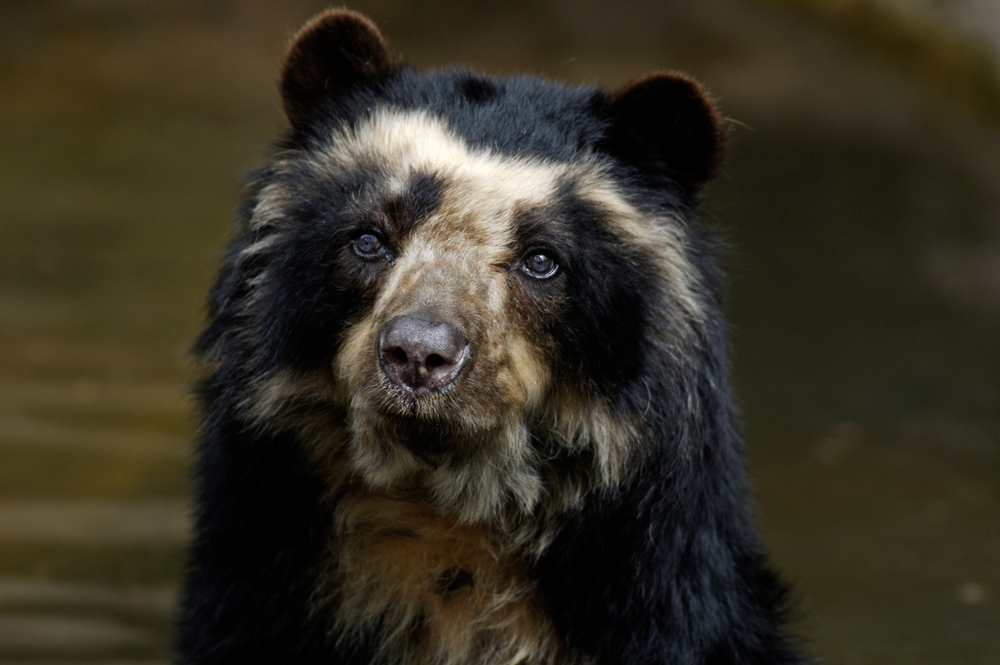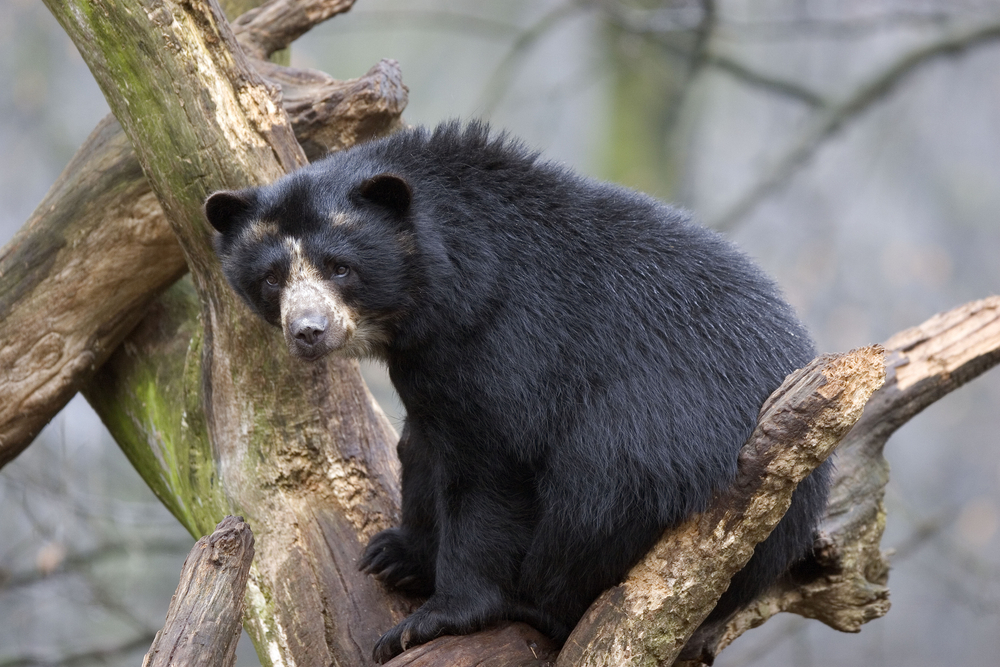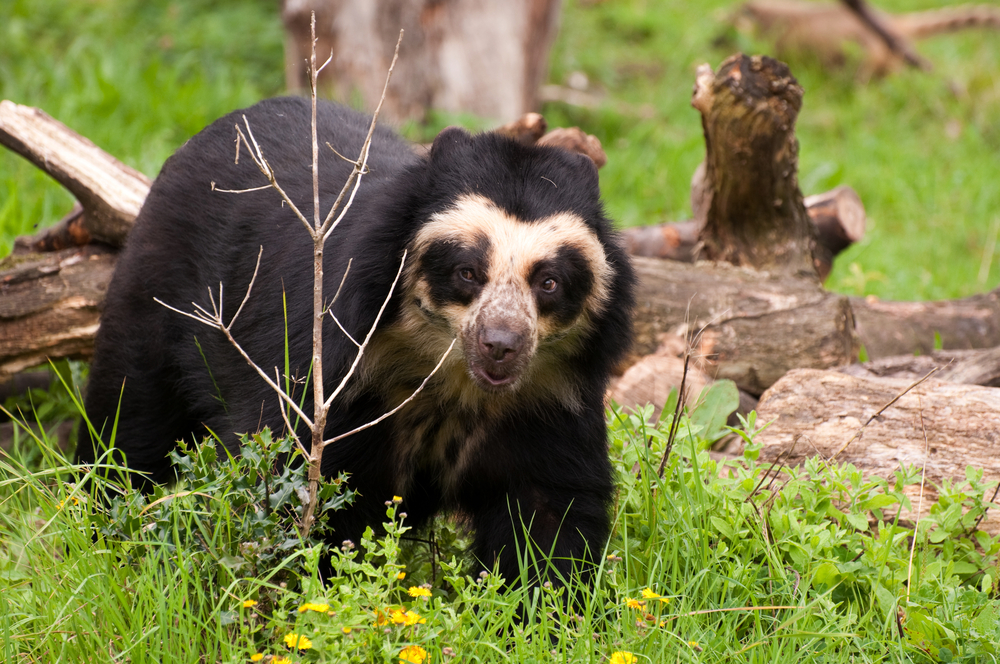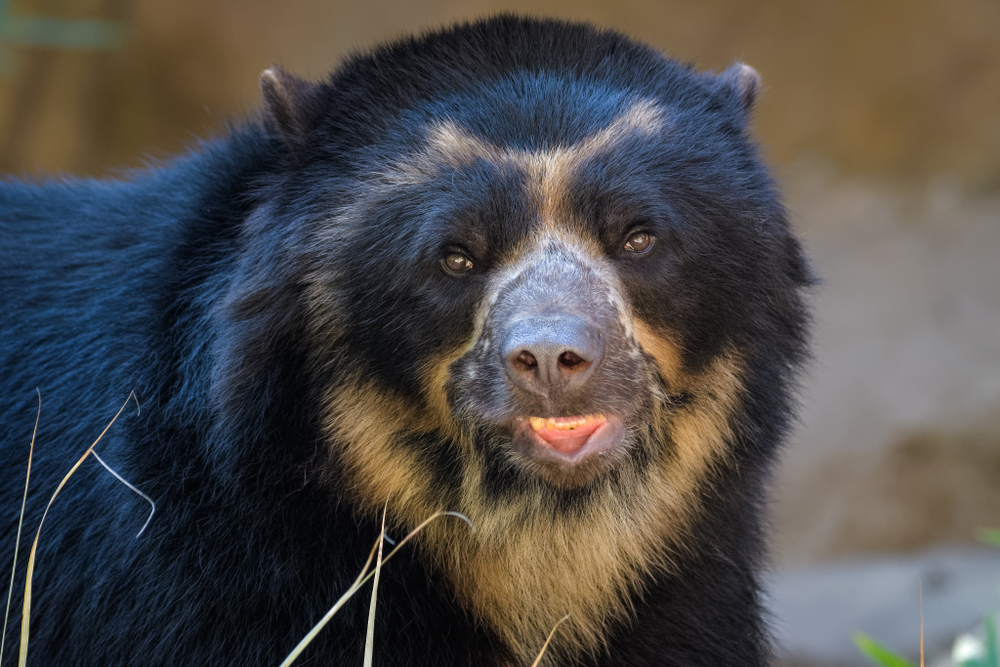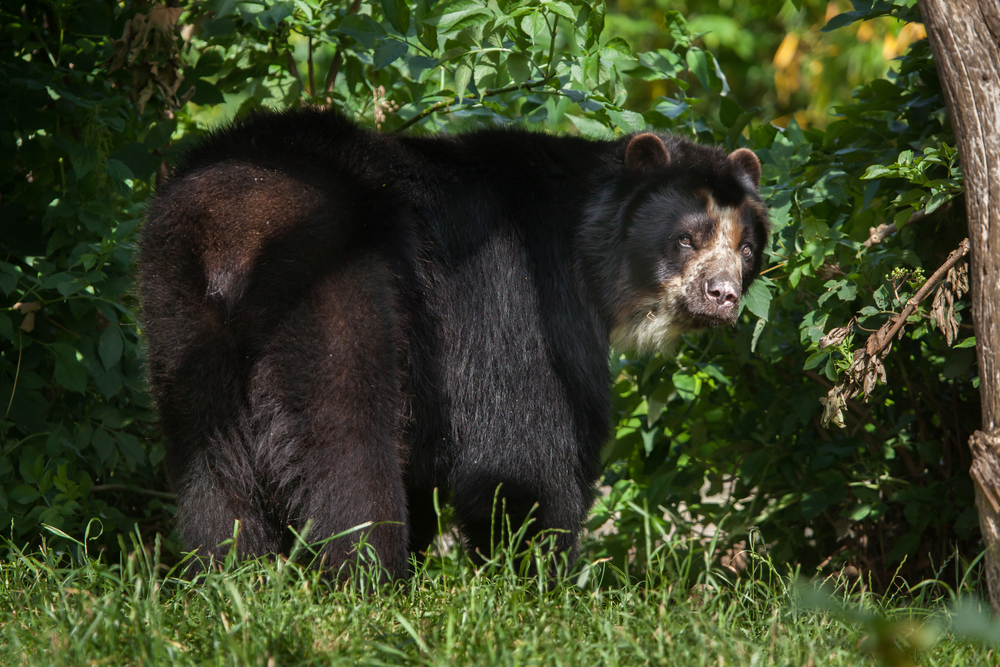The Spectacled Bear, also known as the Andean Bear, has several distinctive features and behaviors that set it apart from other bear species:
- Diet: Unlike most bear species that have an omnivorous diet, the Spectacled Bear is primarily herbivorous. It primarily feeds on fruits, cacti, and other plant materials, supplementing occasionally with insects, small mammals, and carrion. This contrasts with the diet of species like the Grizzly or Polar Bear, which includes a significant portion of animal protein.
- Physical Appearance: The Spectacled Bear is smaller and less stocky than many other bear species. Its most distinguishing feature is the white or light fur around its eyes and face, which looks like spectacles – a feature not seen in other bears.
- Habitat: It is the only bear species native to South America and is adapted to a variety of habitats, from desert margins to cloud forests in the Andean region. This contrasts with other bears that are found in North America, Europe, and Asia.
- Climbing Abilities: Spectacled Bears are excellent climbers and spend a significant amount of time in trees, more so than many other bear species. This arboreal tendency is a key adaptation to their environment.
- Temperament: They are generally more shy and elusive compared to other bears. They tend to avoid contact with humans, making them less visible and studied than some other bear species.
- Conservation Status: The Spectacled Bear is classified as Vulnerable, mainly due to habitat loss and fragmentation, and human conflict. While other bear species also face conservation challenges, the Spectacled Bear’s situation is particularly critical due to its limited habitat range.
- Reproduction: The reproductive habits of Spectacled Bears are less well-documented than those of other bear species, partly due to their secretive nature and the dense habitats they occupy.
In summary, the Spectacled Bear’s unique diet, distinctive facial markings, arboreal lifestyle, and the particular challenges it faces in its Andean habitat set it apart from other bear species globally.































































